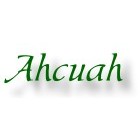The weather continues to be spring-like here in Central Ohio, so I’d be a fool not to take advantage of it. Yesterday I did around a 5-mile hike in 50° temperatures. It took me 3 hours, but I was doing a lot of bushwhacking (and stopping for photos).
Yesterday’s destination: Moonville Tunnel in Zaleski State Forest.
The Zaleski area was a big iron-producing region during the 1800s. That didn’t last, but there are still remnants. The Baltimore and Ohio Southwestern R.R. used to run through the Hewett Fork valley to transport the iron. While the tracks are gone, the railroad bed remains.
Near where the old town of Moonville sat they had to tunnel through the tip of one of the ridges in order to keep the grade and curves within the capability of a train. That’s Moonville Tunnel, which is a bit of a tourist attraction (as much as anything is) for the area.
Here is a a topo map of the area.
My hike started near the Moonville Tunnel and rather centered on the abandoned railroad.
One nice thing is that these old railroad beds are slowly being converted into regular trails. I was happy to see that, since my last visit, they are getting ready to re-bridge part of the trail.
You can see the new concrete forms for the bridge they’ll be putting over Raccoon Creek.
Turning around from there, you can see Moonville Tunnel.
From that picture you can probably see that the ridge peters out on the right there (and that is where Hewett Fork passes the nose of the ridge). There is a trail that passes by on top of that ridge; most folks don’t know about it. My plan was to visit the tunnel and then head up that ridge trail.
It’s not a particularly long tunnel. From fairly close, you can see the other side pretty easily, especially on a day as sunny as yesterday was. Here’s a closer view.
After crossing through the tunnel, here’s the view from the other side.
If you look closely, you can see “MOONVILLE” at the top of the entrance.
From there it’s just a short walk to grab the ridge trail.
The trail has rather steep drop-offs on both sides.
Continuing up the spine of the ridge, eventually it hits the official Zaleski Backpack Trail, which leads to the Rew Overlook.
You can see that the surface there looks rather scree-like. That’s because it is.
The different surfaces are rather interesting. In Hocking Hills, the formations are almost all from Blackhand Sandstone, so a lot of the surface there is sandy/dirty. The rocks at Zaleski are more shale, or very clay-like. The rocks are more like chips, and the soil is just mucky clay, and very slippery when it gets wet.
Anyways, Zaleski is much more of a challenge to one’s soles than Hocking Hills. (Or, if you want to look at it positively, more of an opportunity to train one’s soles.)
The official trail heads down in to Bear Hollow, but for some reason I was in a more exploratory mood, and bushwhacked on a ridge I’d never been on before.
When the railroad was put in, in order to keep their elevation and control the grade, they had to put in a long berm (is that the right term?). That ended up damming the outflow from Bear Run and forming a lake. The official trail passes on the north side of the like, but I decided to explore the south side.
It did make for a rather pretty picture.
You can see where the railroad went, and you can see the railroad ballast gleaming in the sunlight.
That ballast is hell on bare feet.
I bet even Ken Bob would have trouble running on it.
Anyways, I had to take it slowly as I looked for a place to cross Hewett Fork, which is just on the other side of the railroad berm. Of course, with all the rain, the water was running higher than usual. Here is where I finally decided to cross.
That was interesting. I wasn’t really sure how deep it was (just that it was probably the least deep place I’d seen). So, I did an exploratory check, first. Removed my pack, and my pants, and waded through, testing the waters, so to speak.
The waters were definitely below 40°. But, fortunately, they were also only about one foot deep. So I went back, made a trip with just my pants (with car keys and wallet), and then another trip with my pack (with camera). I didn’t want to carry too much at once.
Sorry folks, no pictures of me fording in my underwear. 1) I was not about to set up the tripod just for that; 2) the water was too cold for yet another crossing just for the camera; and 3) well, you figure it out.
Once on the other side, it was a fairly easy trail (though horribly muddy) back to my car.
I had parked fairly close to Lookout Rock, though it was on the other side of the ridge from me. Suddenly, I spotted it.
For some reason, I’d never realized it was visible from this location, running parallel to Hewett Fork before. I had always hiked the trail in the other direction and never looked behind me. But yesterday, with the bare trees and being backlit with the sun going down, it just stood out.
It also helped show why it was called “Lookout Rock”. You really can’t see too much from it these days, because of all the trees. However, back when the area was thriving they had cut down all the trees to make charcoal to run the iron furnaces. That would have given a great view across the valley to the railroad and Moonville (and farther up Hewett Fork to Ingham Station). It really would have been a good lookout.











Leave a comment